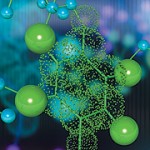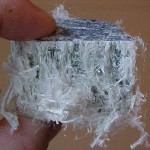 The FDA is on the move. OnApril 20, 2012, it issued two draft guidances pertaining to the effects of nanotechnology on food and cosmetics. In the cosmetics document, the FDA cautions safety and does little more. But in the food safety document, the FDA moves in the directing of setting forth steps to be taken by food manufacturers to prove the safety of any food and food packaging using nanotechnology. This heightened scrutiny for food products containing nanoparticles is an affirmative move on the part of the FDA to regulate nanotechnology.
The FDA is on the move. OnApril 20, 2012, it issued two draft guidances pertaining to the effects of nanotechnology on food and cosmetics. In the cosmetics document, the FDA cautions safety and does little more. But in the food safety document, the FDA moves in the directing of setting forth steps to be taken by food manufacturers to prove the safety of any food and food packaging using nanotechnology. This heightened scrutiny for food products containing nanoparticles is an affirmative move on the part of the FDA to regulate nanotechnology.
In the April 20 food safety guidance document, the FDA states:
“The manufacturing process of a food substance is considered for the purposes of safety assessment only insofar as it may affect the properties and safety of the finished product.”
The FDA goes on to say that “[t]he particle size distribution of a food substance may affect its ability to be absorbed by the body or to migrate from food packaging into food.” The FDA explicitly states that manufacturing processes involving nanotechnology are included within the scope of the guidance document.
The FDA states that it does not intend to judge any substances containing nanoparticles as being harmful – or not – but that use of nanotechnology in food may warrant certain assessments in determining the safety of the food. The FDA states:
“The application of nanotechnology may result in product attributes that differ from those of conventionally-manufactured products, and thus may merit examination. . . . For example, so-called nano-engineered food substances can have significantly altered bioavailability and may, therefore, raise new safety issues that have not been seen in their traditionally manufactured counterparts.”
In other words, safety assessments in this area should be based on criteria for food substances in the nanometer range, and that could require new and different assessment methodologies. However, the FDA has said that it will continue to regulate nanotechnology products under its existing statutory authorities, e.g. regulations on food color, additives, and packaging.
So does the guidance represent a step forward? I think it does, if for no other reason than it explicitly recognizes that there may be discrete safety issues raised by the use of nanotechnology in food. The guidance is not self-executing; it is currently available for public comment. It represents a step in the right direction. Its recommendations are preliminary, it seems to me. Going forward, further consideration needs to be given to the issues it raises to determine if regulation specific to products using nanotechnology is warranted. This should be only the beginning.
The draft guidance is Draft Guidance for Industry: Assessing the Effects of Significant Manufacturing Process Changes, Including Emerging Technologies, on the Safety and Regulatory Status of Food Ingredients and Food Contact Substances, Including Food Ingredients that are Color Additives, available at
 In my most recent entry
In my most recent entry The National Academies have promised a report by the end of January 2012 on priorities (both short- and long-term) for studying the health, safety, and environmental effects of nanotechnology. According to the National Academies, this report will address the following matters: the properties of engineered nanomaterials; methods and technologies for “detecting, measuring, analyzing, and monitoring” engineered nanomaterials; what studies are needed; what testing methods need to be developed; the models for predicting impacts that should be developed; research priorities; and the criteria for evaluating research progress. In its “Statement of Task,” the National Research Council has explained:
The National Academies have promised a report by the end of January 2012 on priorities (both short- and long-term) for studying the health, safety, and environmental effects of nanotechnology. According to the National Academies, this report will address the following matters: the properties of engineered nanomaterials; methods and technologies for “detecting, measuring, analyzing, and monitoring” engineered nanomaterials; what studies are needed; what testing methods need to be developed; the models for predicting impacts that should be developed; research priorities; and the criteria for evaluating research progress. In its “Statement of Task,” the National Research Council has explained: An interesting and potentially revolutionary development in magnetic storage of data was announced a couple of weeks ago. Researchers at I.B.M. have reported the development of a new class of nanomaterials that could lead to the development of new, significantly smaller memory chips and disk drives that will both hold vast amounts of information and use less power than the current class of silicon chips. The report (Loth, Baumann, Lutz, Eigler, and Heinrich, Bistability in Atomic-Scale Antiferromagnets) appears in the journal Science at Vol. 335, no. 6065, pp. 196-99 (Jan. 13, 2012), and has been widely reported in the news media. There is much excitement over this development, both for its inherent promise for data storage and for its potential in other areas. Analysts have suggested that other new nanomaterials may be forthcoming using some of the same general methodologies and approaches of these researchers.
An interesting and potentially revolutionary development in magnetic storage of data was announced a couple of weeks ago. Researchers at I.B.M. have reported the development of a new class of nanomaterials that could lead to the development of new, significantly smaller memory chips and disk drives that will both hold vast amounts of information and use less power than the current class of silicon chips. The report (Loth, Baumann, Lutz, Eigler, and Heinrich, Bistability in Atomic-Scale Antiferromagnets) appears in the journal Science at Vol. 335, no. 6065, pp. 196-99 (Jan. 13, 2012), and has been widely reported in the news media. There is much excitement over this development, both for its inherent promise for data storage and for its potential in other areas. Analysts have suggested that other new nanomaterials may be forthcoming using some of the same general methodologies and approaches of these researchers. The National Institute of Standards and Technology (NIST) has issued what is being touted as the world’s first reference material for single-wall carbon nanotube soot. In its statement, NIST calls single-wall carbon nanotubes (SWCNT) “perhaps the archetype of all nanoscale materials.” The promise of SWCNT in industrial use is great (NIST chemical engineer Jeffrey Fagan stated that “full development of these materials should enable lighter, stronger materials, as well as improve many technologies from sensors to electronics and batteries”). But as with most things, there’s a catch.
The National Institute of Standards and Technology (NIST) has issued what is being touted as the world’s first reference material for single-wall carbon nanotube soot. In its statement, NIST calls single-wall carbon nanotubes (SWCNT) “perhaps the archetype of all nanoscale materials.” The promise of SWCNT in industrial use is great (NIST chemical engineer Jeffrey Fagan stated that “full development of these materials should enable lighter, stronger materials, as well as improve many technologies from sensors to electronics and batteries”). But as with most things, there’s a catch. For those of you who are following this blog, I’ll apologize for letting nearly two months slip away since the previous post. The reason has to do with my co-blogger, Eric Laury. After passing both the Pennsylvania and New Jersey bar exams, Eric took a job in a law firm in Denver, which means he is now studying for the Colorado bar exam. I have every reason to believe that Eric will resume writing for this blog after things settled down for him, but likely as an occasional blogger. I congratulate him on his success and look forward to our continued collaboration.
For those of you who are following this blog, I’ll apologize for letting nearly two months slip away since the previous post. The reason has to do with my co-blogger, Eric Laury. After passing both the Pennsylvania and New Jersey bar exams, Eric took a job in a law firm in Denver, which means he is now studying for the Colorado bar exam. I have every reason to believe that Eric will resume writing for this blog after things settled down for him, but likely as an occasional blogger. I congratulate him on his success and look forward to our continued collaboration. It’s been a long time coming, but the European Commission published its definition of nanomaterials on October 18, 2011. Though not binding on EU member countries, this is a major step toward the use of a uniform definition throughout the EU and – who knows? – elsewhere in the world. The Commission adopted the following previously recommended definition of “nanomaterial”:
It’s been a long time coming, but the European Commission published its definition of nanomaterials on October 18, 2011. Though not binding on EU member countries, this is a major step toward the use of a uniform definition throughout the EU and – who knows? – elsewhere in the world. The Commission adopted the following previously recommended definition of “nanomaterial”: I have written
I have written 
